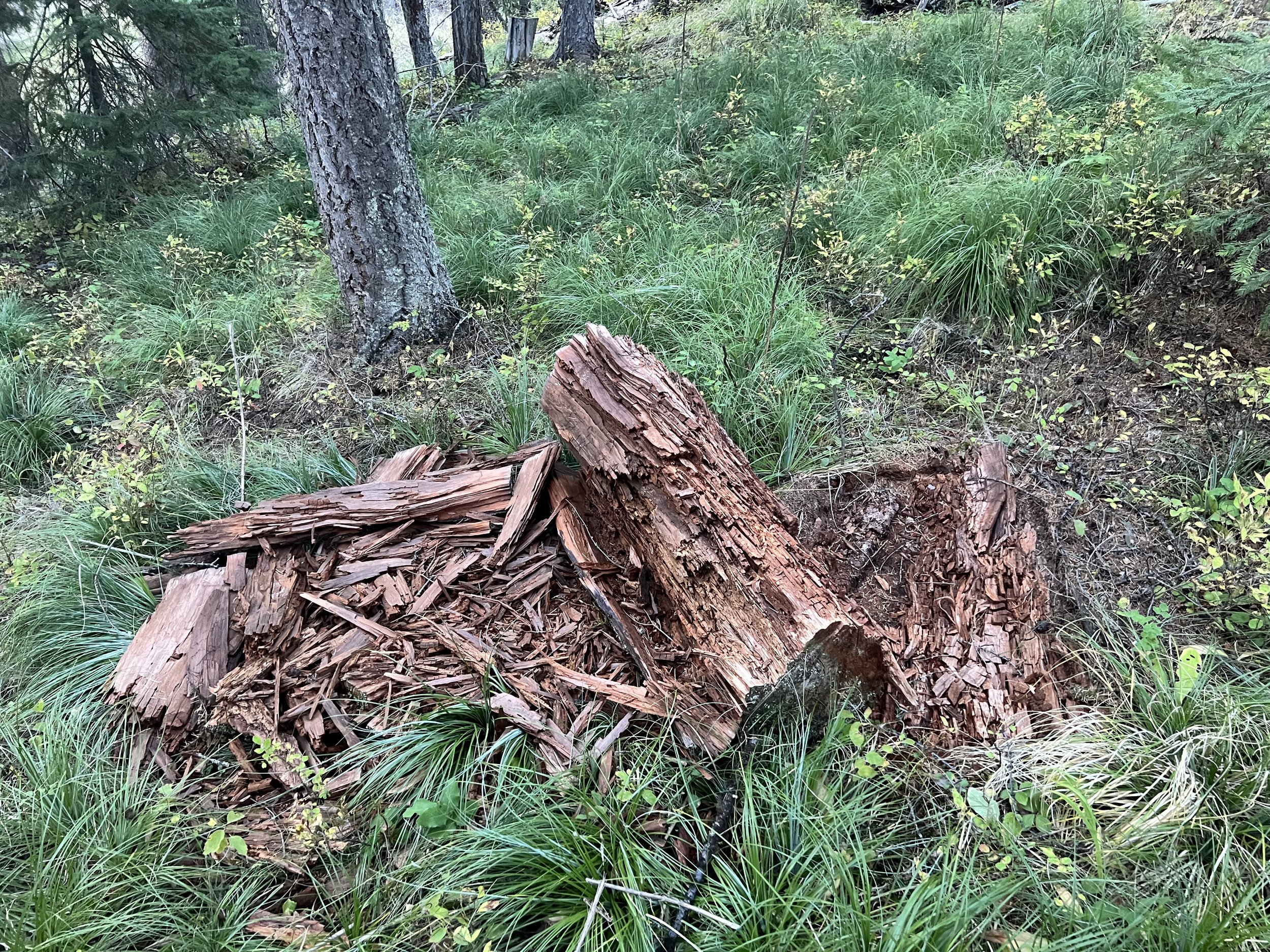Open Season in Grizzly Country
By Jackie Pagano
Yellow hues from aspen trees and red tints of huckleberry spatter the forest this time of year, complemented by another color that makes its way onto the landscape - blaze orange. Hunting seasons vary across game animals and state lines, but late October and November is tried and true for the most common of all - rifle season for big game including deer, elk, and antelope.
In the Rocky Mountains hunters must remain vigilant for not only their target species but for grizzly bears as well. As grizzly bears have expanded their range to encompass much of western Montana and can remain active at low elevations well into December, staying alert is essential for hunter safety.
Knowing how to identify fresh bear tracks, signs of bear activity, and areas dense with natural food sources, such as huckleberry patches or fresh carcasses, can help determine if an area is safe to hunt. Remaining aware of potential wildlife encounters allows you to spot more wildlife, and most importantly, enables quick and appropriate responses if needed.
A stump ripped open by a bear foraging for carpenter ants
When it comes to responding to wildlife encounters, carrying bear spray is best practice while in bear country. Bear spray has proven to be an effective tool at deterring agitated or aggressive bears at close range. The spray contains capsaicin, the active ingredient in chili peppers, along with a propellant that shoots the aerosol from the can. It’s essential to carry the spray in an easily accessible location and to understand both how and when to use it.
There are different ways to respond to bear encounters, depending on the situation. If you spot a bear in the distance and it hasn’t noticed you, quietly leave the area. If the bear has seen you but isn’t approaching, remain calm, back away slowly, and avoid direct eye contact. If a bear shows signs of agitation such as ears back, stomping its front paws, huffing, or clacking its jaws, retrieve your bear spray and continue to back away slowly and calmly. Avoid turning your back on the bear, and speak in a low, calm voice while retreating. If the bear approaches in a threatening manner, use your bear spray when the bear is within 30 feet away. Consider giving a quick burst of spray to get a cloud moving towards the bear before it reaches 30 feet. Once within 30 feet, spray continuously at a downward angle until the bear is deterred to create a cloud for the bear to walk into.
For anyone wanting to practice using bear spray, Swan Valley Connections offers bear spray trainings with inert cans. You can stop by our office at 6887 MT 83, Condon MT, Monday – Friday during operating hours.
Another crucial aspect of hunting in grizzly country is field-dressing and processing game quickly while staying aware of your surroundings. Some bears have learned to associate gunshots with gut piles or carcasses left by hunters. To minimize the risk of attracting a bear, remove the carcass from the field as quickly as possible. Bears have an extraordinary sense of smell, capable of detecting food sources up to 20 miles away.
If you must leave a carcass overnight, it’s best to process and quarter the animal and hang the quarters in trees, using the same method as a bear hang for camping (hanging meat or food at least 10 feet up and 4 feet out from a tree). Hanging the quarters in a visible spot is recommended so you have a clear line of sight when retrieving them the next day and approach upwind so that a bear can smell you coming if one is there. As you arrive at the area, make plenty of noise and, if possible, scan the area with binoculars to check for bears before making the final approach. If you find that your carcass has been disturbed or covered by debris, do not approach. Bears often bury their kills to return to later. If this occurs you can report the incident to Montana Fish, Wildlife & Parks (FWP), and you may be eligible for another hunting license. Do not put your life at risk for spoiled game meat.
Figure 4: Illustrations demonstrating proper bear hangs by Mike Clelland
Hunting in grizzly bear country requires respect for the landscape and the wildlife that inhabit it. By taking the necessary precautions, staying alert, and understanding how to respond in the event of a bear encounter, you can help ensure a safe and successful hunt.
Swan Valley Connections coordinates the efforts of Swan Valley Bear Resources (SVBR), a collaborative group that promotes coexistence between humans and bears and provides resources to anyone in the Bigfork and Ferndale communities. SVBR indefinitely loans out bear-resistant garbage containers for free and offers a cost-share program for electric fencing around attractants such as small livestock and orchards. We provide free property consultations to identify attractants and will design an electric fence to suit the needs of the landowner, maintaining proper specifications to deter grizzly bears. Swan Valley Connections' trained staff will even install the electric fence free of charge. Call Swan Valley Connections at (406) 754-3137 or email Jackie@svconnections.org to learn more about the resources available through Swan Valley Bear Resources. To report bear sightings and conflicts, contact our local MT Fish, Wildlife, & Parks Bear and Lion Specialist, Erik Wenum, at (406) 250-0062.




